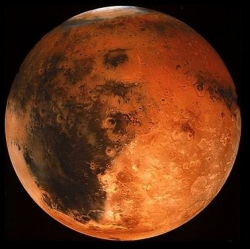
A new DNA analysis of the Martian-like landscape on top of some South American volcanoes has found communities of bacteria, fungi, and archaea. These organisms are not just capable of surviving there, but also deriving their energy in ways not currently known, perhaps from volcanic gases, the researchers think.
“We haven’t formally identified or characterized the species,” said Ryan Lynch, a microbiologist with the University of Colorado in Boulder who is one of the finders of the organisms, “but these are very different than anything else that has been cultured. Genetically, they’re at least 5 percent different than anything else in the [DNA] database of 2.5 million sequences.” The database includes a close-to-comprehensive collection of microbes, and is continually updated as researchers worldwide add to it.
The soil samples were collected on the incredibly dry slopes of the tallest volcanoes in the Atacama region. Whatever snow that does fall there quickly sublimates back into the atmosphere, and the soils there are so depleted that nitrogen levels were below detectable limits. The ultraviolet radiation there is twice as high as even the harshest low-elevation deserts. And the temperature swung from 14 to 133 degrees Fahrenheit in less than 24 hours, during the time that the researchers were there.
How the organisms survive there is a mystery to the researchers. They looked for the genes known to be involved in photosynthesis in the organisms, and looked into the cells looking for chlorophyll, but couldn’t find any evidence that the organisms were photosynthetic.
The researchers think that they might be deriving their energy from the small amounts of carbon monoxide and dimethyl sulfide that are carried to the region by wind.
Normally, in more temperate locations, there are thousands of microbial species represented in just a gram of soil, but in the barren Atacama mountain soils, there appear to only be only a few species that can live there.
“To find a community dominated by less than 20 [species] – that’s pretty amazing for a soil microbiologist,” Schmidt said.
Steven Schmidt, a University of Colorado in Boulder microbiologist, “has studied sites in the Peruvian Andes where, four years after a glacier retreats, there are thriving, diverse microbe communities. But on these volcanoes on the Chile-Argentina border, which rise to altitudes of more than 6,000 meters (19,685 feet) above sea level and which have been ice-free for 48,000 years, the bacterial and fungal ecosystems have not undergone succession to more diverse communities.”
“It’s mostly due to the lack of water, we think,” Schmidt said. “Without water, you’re not going to develop a complex community.”
